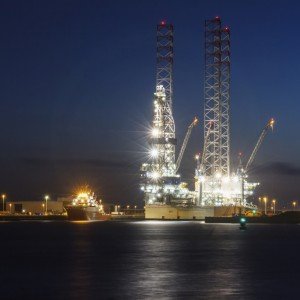 Owners and operators contemplating the dismantling of offshore platforms may not be fully aware of their legal responsibilities in relation to the presence of hazardous materials, an industry specialist has warned.
Owners and operators contemplating the dismantling of offshore platforms may not be fully aware of their legal responsibilities in relation to the presence of hazardous materials, an industry specialist has warned.
Asbestos risk management specialists Lucion Environmental is taking steps to remind the oil and gas sector that under the terms of the EU Ship Recycling Regulation 2013, offshore platforms and rigs are formally required to hold an Inventory of Hazardous Materials (IHM).
The move follows the IMO’s adoption of the Hong Kong International Convention for the safe and environmentally sound recycling of all ships.
However, under the definitions included in the regulations, a ‘ship’ means a vessel of any type whatsoever operating or having operated in the marine environment.
As a result, the requirement for an IHM includes submersibles, floating craft, floating platforms, self-elevating platforms, Floating Storage Units (FSUs), and Floating Production Storage and Offloading Units (FPSOs).
The IHM should summarise the presence of all on-board hazardous materials including explosives, flammable and combustible substances, poisons, toxins and radioactive materials.
In addition, many ships and offshore platforms will inevitably contain quantities of asbestos, CFC gases, polychlorinated biphenyls (PCBs), tributyltin compounds (TBTs) and a selection of toxic heavy metals within the structure, plant or componentry.
The potentially wide ranging effects of the definition and their impact on safety requirements for the oil and gas sector have been recognised by the European Maritime Safety Agency (EMSA).
To further clarify the situation, Lucion is now working with EMSA to develop a set of guidelines and instructions on the requirements for compliance with the standards and on the specific production of an IHM.
Phil Rozier, head of oil and gas sector at Lucion Environmental, said: “EMSA has confirmed the application of the regulations in recent discussions, although it appears that this issue has not been fully understood by the oil and gas sector.
“If this is not addressed properly, gaining compliance could represent a significant challenge to the industry’s plans.
“With a substantial number of North Sea platforms and rigs scheduled for decommissioning and dismantling over the next decade and beyond, it is important that steps are taken now to formally identify and record the locations of any potentially hazardous materials.
“The inventory is mandatory and can take some time to complete given the working conditions and potential range of hazardous materials associated with offshore structures.”
The regulations specifically require existing vessels of over 500 GT to carry an IHM by December 2020 at the latest. For new build structures and vessels the IHM must be in place from December 2015 onwards and by December 2016 for ‘last voyage’ or vessels being taken out of service.
Approaches to managing the risks associated Musculoskeletal disorders
In this episode of the Safety & Health Podcast, we hear from Matt Birtles, Principal Ergonomics Consultant at HSE’s Science and Research Centre, about the different approaches to managing the risks associated with Musculoskeletal disorders.
Matt, an ergonomics and human factors expert, shares his thoughts on why MSDs are important, the various prevalent rates across the UK, what you can do within your own organisation and the Risk Management process surrounding MSD’s.


